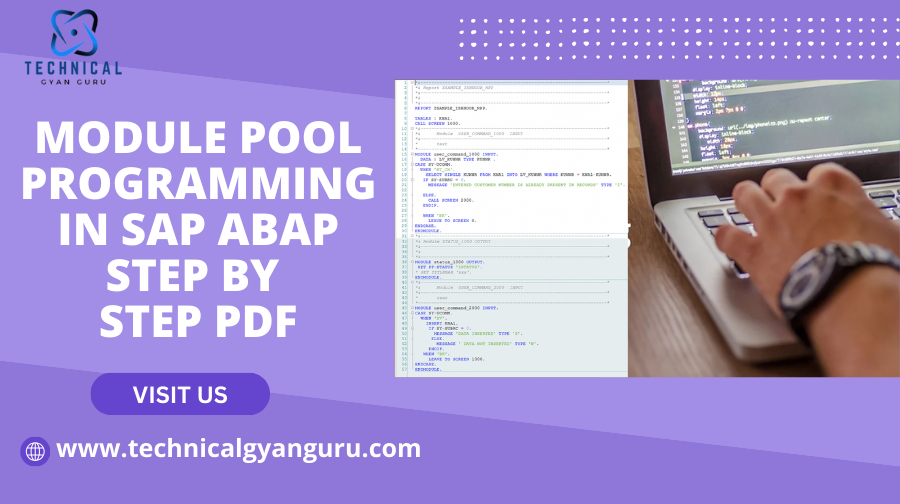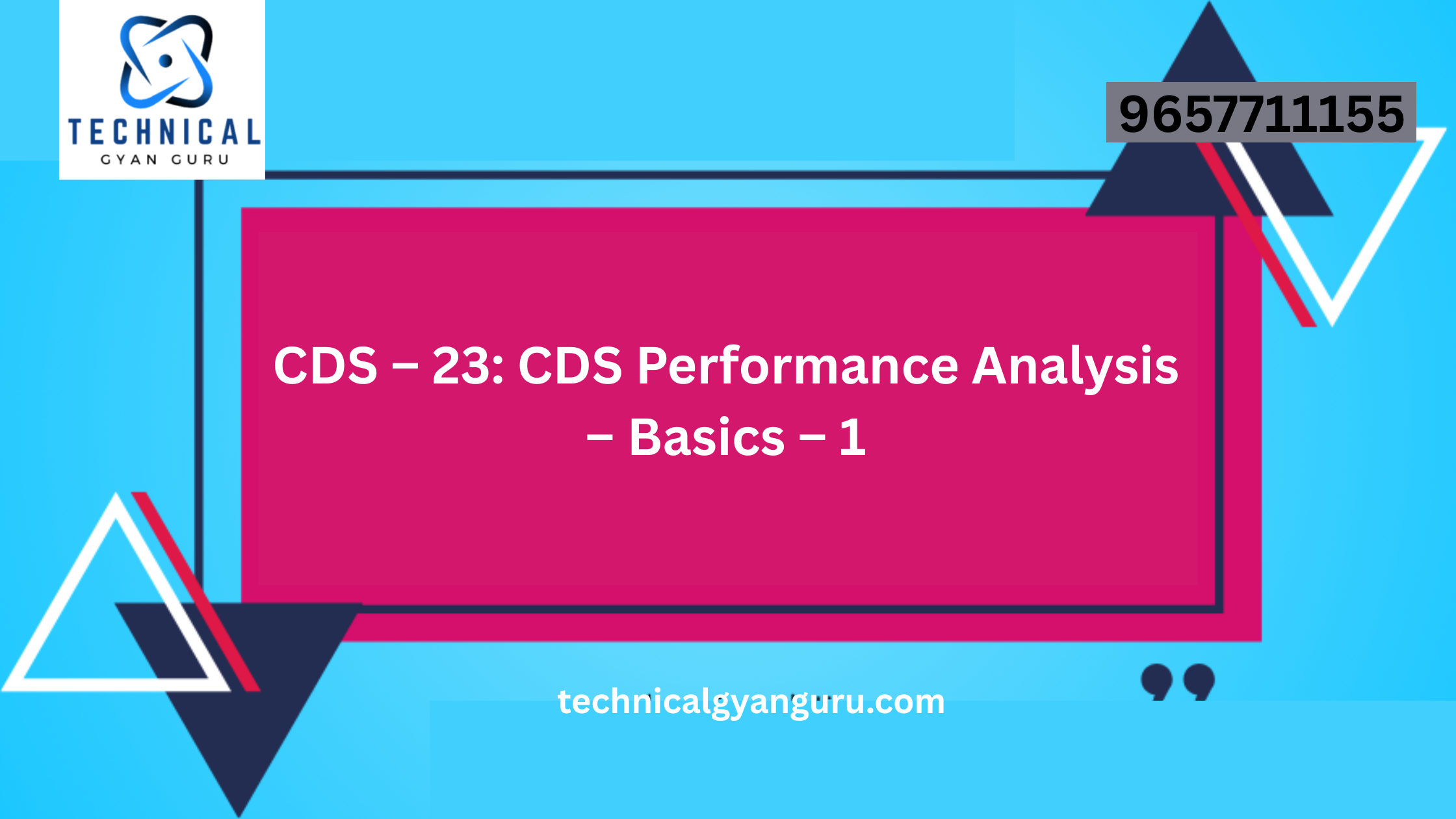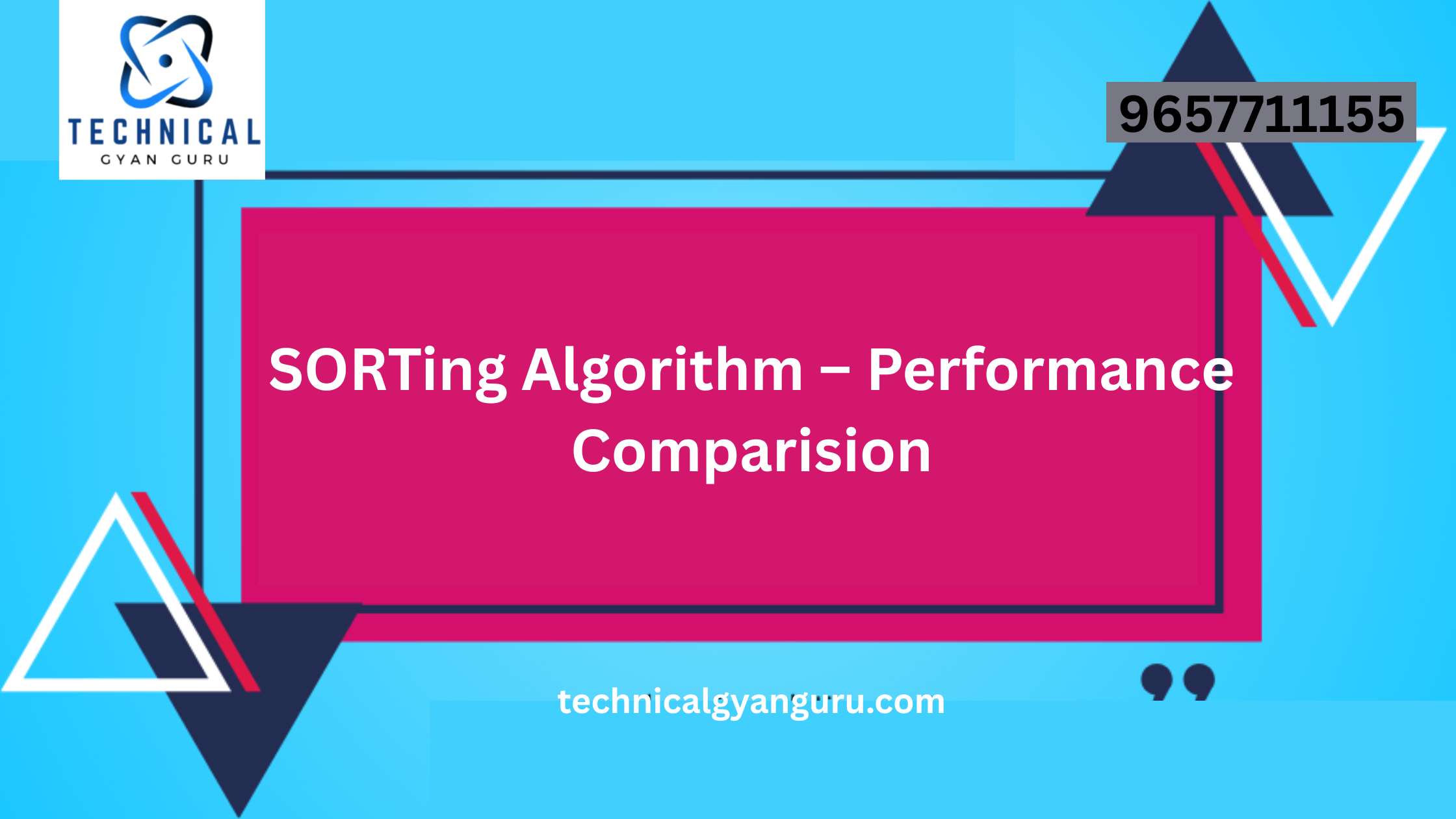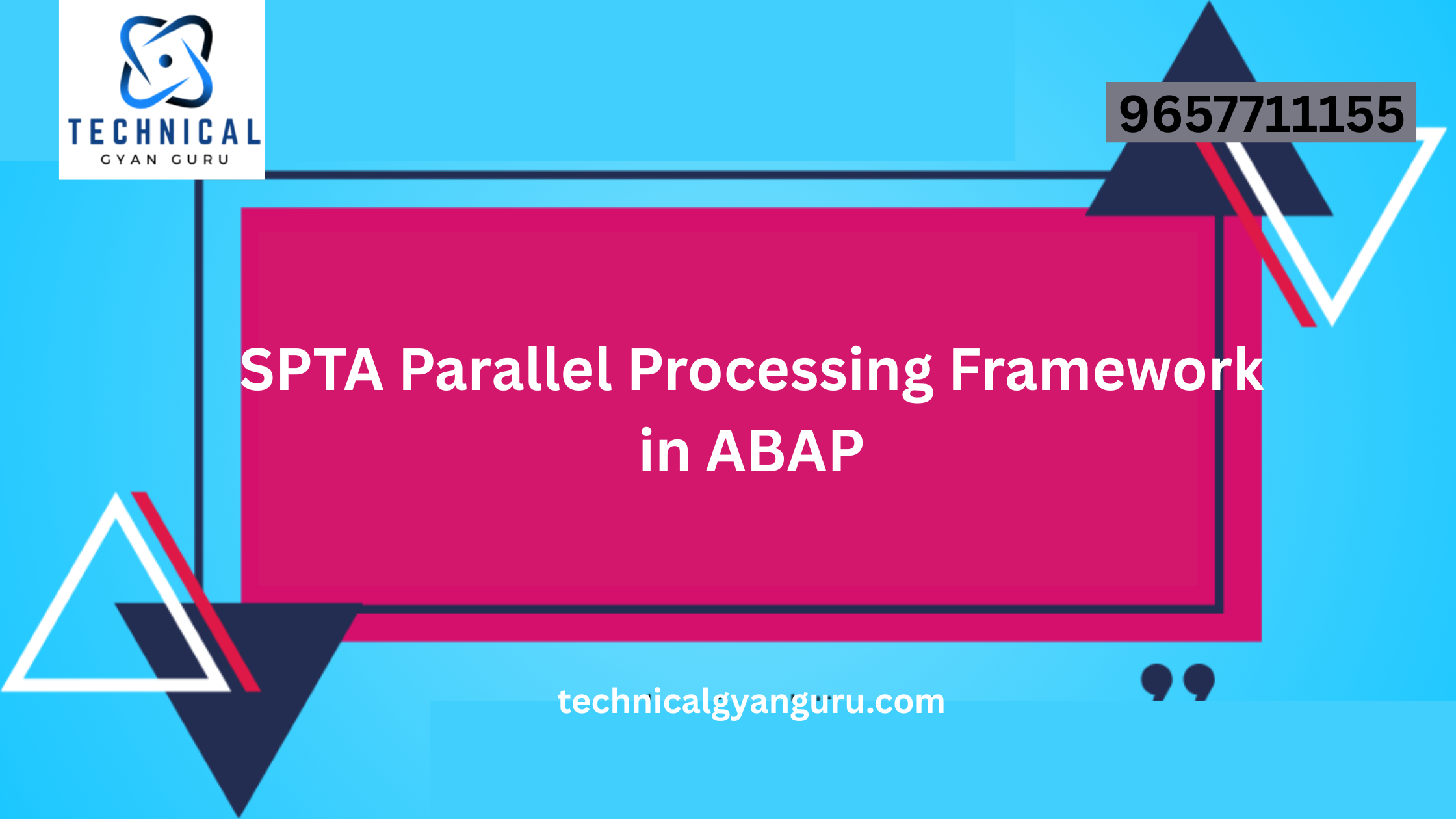
Discoverwith our comprehensive PDF guide. Join our SAP course SAP ABAP Module Pool Programming Step-by-Step PDF institute
Understanding the search intent behind SAP ABAP Module Pool Programming is crucial for crafting this blog. Potential readers, including SAP developers, IT managers, and business executives, seek actionable insights to optimize their ERP systems. Keywords such as “SAP ABAP,” “Module Pool Programming,” “SAP development,” and “ERP customization” should be strategically integrated throughout the content to enhance discoverability and relevance.
Ever wished you could tailor SAP’s functionality to your specific business needs? Look no further than SAP ABAP Module Pool Programming! This powerful technique allows you to craft custom transactions with user-friendly interfaces, streamlining processes and boosting efficiency within your organization.
This comprehensive guide, complete with free PDF resources, will equip you with the knowledge to embark on your module pool programming journey. We’ll delve into the step-by-step process, from creating the program structure to implementing the logic behind your custom transaction.
What is SAP ABAP Module Pool Programming?
SAP ABAP Module Pool Programming refers to the development of interactive programs within SAP systems. These programs are designed to facilitate user interaction through customizable screens, effectively transforming complex backend processes into user-friendly interfaces. This approach not only simplifies navigation but also ensures that end-users can perform tasks efficiently without needing extensive technical knowledge. Imagine building user-friendly interfaces within SAP, complete with buttons, text fields, and drop-down menus. That’s the magic of module pool programming! It leverages the ABAP development language to construct bespoke screens and link them to processing logic, allowing users to interact with your custom functionality seamlessly.
Why Use Module Pool Programming?
- Enhanced User Experience: Ditch the cryptic SAP screens and create intuitive interfaces that cater to your specific workflows.
- Streamlined Processes: Automate repetitive tasks and condense multiple steps into a single, user-friendly transaction.
- Improved Data Entry Accuracy: Implement validations and data checks to ensure data integrity within your custom solution.
- Increased Efficiency: Empower your team with tools that fit their needs, leading to faster processing times and improved productivity.
Taking the First Step: A Step-by-Step Approach
1. Environment Setup:
- Access the SAP development environment (usually via transaction SE80).
- Familiarize yourself with the ABAP Editor, Screen Painter, and Menu Painter tools.
2. Program Creation:
- Use transaction SE80 to create a new ABAP program.
- Set the program type to “Module Pool” and assign a descriptive name.
3. Screen Design:
- Launch the Screen Painter tool to design the user interface for your transaction.
- Add elements like input fields, text boxes, buttons, and tables to capture and display data.
- Define attributes for each element, such as data type, length, and label.
4. Program Logic Implementation:
Certainly! Here’s a basic example of ABAP code that demonstrates how to control the program’s behavior using conditional statements and loops:
abapCopy codeREPORT Z_PROGRAM_BEHAVIOR_CONTROL.
* Declaration of variables
DATA: lv_counter TYPE I,
lv_name TYPE STRING VALUE 'John',
lv_age TYPE I VALUE 25.
* Conditional statement to control behavior
IF lv_age >= 18.
WRITE: / lv_name, 'is an adult.'.
ELSE.
WRITE: / lv_name, 'is a minor.'.
ENDIF.
* Loop to demonstrate iterative behavior
DO 5 TIMES.
lv_counter = sy-index. " Assigning loop index to counter variable
WRITE: / 'Iteration:', lv_counter.
ENDDO.
Explanation:
- REPORT Statement: Defines the name of the ABAP program (
Z_PROGRAM_BEHAVIOR_CONTROL). - Data Declaration: Declares variables:
lv_counter: Integer variable for counting iterations in the loop.lv_name: String variable initialized with the name ‘John’.lv_age: Integer variable initialized with the age 25.
- Conditional Statement (
IF): Controls program behavior based on the value oflv_age.- If
lv_ageis 18 or higher, it outputs thatlv_nameis an adult. - If
lv_ageis less than 18, it outputs thatlv_nameis a minor.
- If
- Loop (
DO): Demonstrates iterative behavior with a loop that runs 5 times (DO 5 TIMES).sy-indexis a system variable that holds the current loop index.- Inside the loop, it assigns the value of
sy-indextolv_counterand prints the iteration number.
Key Points:
- Conditional Statements: Used to execute specific blocks of code based on conditions (
IF...ELSE...ENDIF). - Looping Structures: Used to repeat a block of code a certain number of times (
DO...ENDDO). - Output:
WRITEstatement is used to display output to the screen. - Variable Initialization: Variables are declared and initialized (
lv_name,lv_age).
This example provides a basic understanding of how ABAP can control program behavior through conditional statements and loops.
5. Testing and Refinement:
- Execute your program using the assigned transaction code.
- Log in to SAP: Open your SAP GUI and log in to the SAP system using your credentials.
- Navigate to Transaction Code: Enter the transaction code assigned to your ABAP Module Pool program in the command field at the top of the screen and press Enter.
- Select Parameters (if applicable): Depending on how your program is designed, you may be prompted to enter parameters or select options. These parameters could include dates, IDs, or any other relevant information needed to execute the program.
- Navigate Through Screens: Once you have entered the required parameters, if any, and confirmed your selections, you will be taken to the initial screen of your Module Pool program. TInteract with the Program: Use the interface provided by your ABAP Module Pool program to perform the intended tasks.
- Follow Program Logic: As you navigate through different screens or actions within the program, the flow logic defined in your ABAP code will determine how the program behaves in response to your inputs.
- Review and Confirm: After completing the necessary steps within the program, review the results or outputs displayed on the screen.
- Exit or Continue: Depending on the design of your ABAP Module Pool program, you may have an option to exit the program directly from the last screen or to navigate back to a menu or initial screen for further actions.
- Log Out (if needed): Once you have finished using the program, log out of the SAP system to ensure security and compliance with organizational policies
Free PDF Resources to Empower Your Learning
The internet abounds with valuable resources to bolster your module pool programming expertise. Here are a few free PDF downloads to get you started:
- SAP Help Portal: The official SAP documentation offers a comprehensive guide to module pool programming concepts: https://community.sap.com/t5/application-development-discussions/how-to-add-f4-help-to-a-field-on-screen-module-pool/m-p/2130683
- ABAP Tutorial Point: This website provides a detailed explanation of module pool programming with code examples: https://www.tutorialspoint.com/sap_abap/sap_abap_pdf_version.htm
Beyond the Basics: Explore Advanced Techniques
As you gain proficiency, delve into advanced features like
- Subscreens: Create hierarchical screen structures for complex data entry.
- Flow Logic: Implement intricate processing logic using modules and subroutines.
- Database Access: Interact with SAP databases to retrieve and manipulate data.
- Menu Integration: Seamlessly integrate your custom transaction into the SAP menu structure.
Embrace the Power of Customization
SAP ABAP Module Pool Programming empowers you to unlock the full potential of SAP by tailoring it to your specific business needs. With dedication and the guidance provided in this blog, you’ll be well on your way to crafting user-centric transactions that streamline processes and elevate your team’s productivity.
So, take the plunge, explore the free resources mentioned above, and embark on your journey to becoming an SAP ABAP module pool programming pro!
Conclusion
In conclusion, module pool programming in sap abap step by step pdf represents a cornerstone of efficient ERP management, empowering organizations to leverage SAP’s full potential. By embracing this approach, businesses not only enhance operational efficiency but also elevate user satisfaction through intuitive, user-centric interfaces. As technology continues to evolve, mastering Module Pool Programming remains instrumental in driving sustainable growth and innovation within the SAP ecosystem.
Whether you’re a seasoned SAP developer or a business leader exploring ERP enhancements, understanding Module Pool Programming is essential for unlocking new possibilities in enterprise software management. Embrace the power of SAP ABAP Module Pool Programming and embark on a journey towards streamlined processes and enhanced productivity.
you may be intrested in this blog here:-
Engaging Conversation Questions for UKG Class Boost Skills







